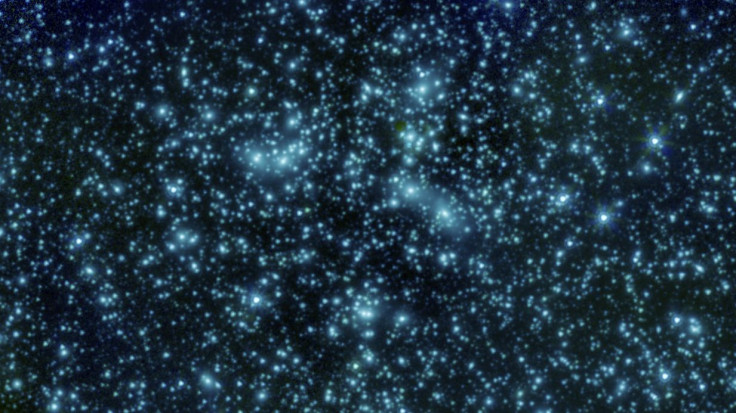Astronomers Discover Giant Magnetic Fields Created By Collision Of Galaxy Clusters

The universe is a big place populated by big things. Galaxy clusters — massive structures formed over millions, or even billions of years, as smaller galaxies move closer due to gravitational attraction — are among the biggest objects in the observable universe.
However, according to a study published Wednesday in the journal Astronomy and Astrophysics, the cosmos may just have something much larger than these ginormous structures. The study, based on observations made using the 100-meter Effelsberg radio telescope in Germany, reveals that collisions between galaxy clusters create massive magnetic fields — many of which may be bigger than the clusters themselves.
“We discovered the so far largest ordered magnetic fields in the universe, extending over 5-6 million light years,” study lead author Maja Kierdorf from the Max Planck Institute of Radio Astronomy said in a statement released Wednesday.
In addition to stars, gas, dust, planets and the omnipresent dark matter, galaxy clusters, which typically extend over a distance of about 10 million light-years, contain charged particles. These charged particles create their own magnetic fields, and when two clusters collide, the shock compression of hot gas and magnetic fields leads to the creation of arc-like features astronomers call “relics.”
One of the galaxy clusters the researchers looked at — CIZA J2242+53 — contains a relic named “Sausage” because of its shape. So far, relics have been found in about 70 galaxy clusters.

For the purpose of this study, the astronomers took images of these relics in radio waves using the Effelsberg telescope. Linearly polarized relics — signs of extremely ordered magnetic fields — were found in the four galaxy clusters observed, in one case for the first time. The magnetic fields were of similar strength to the Milky Way’s, and were highly polarized.
Analysis of the degrees of polarization also revealed that galaxy clusters collide with velocities of roughly 2,000 kilometer per second (4.4 million miles per hour) — much higher than previous measurements derived from observations of X-ray emissions.
“Now we can systematically search for ordered magnetic fields in galaxy clusters using polarized radio waves,” study co-author Rainer Beck, also from the Max Planck Institute, said in the statement.
© Copyright IBTimes 2025. All rights reserved.





















